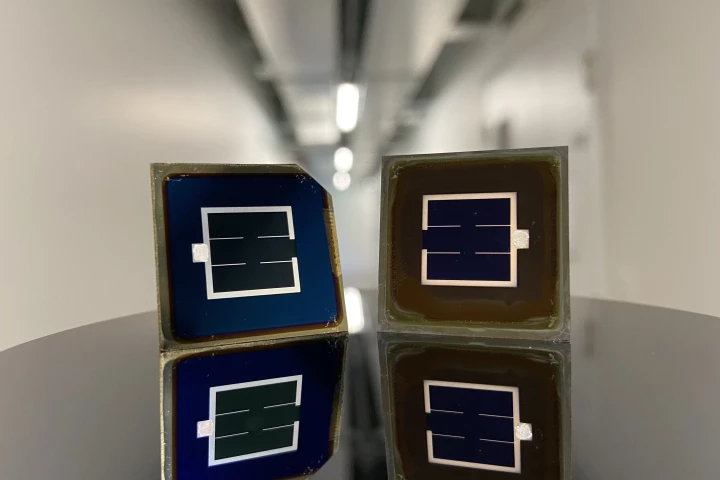Perovskite
-
Perovskite and silicon are proving to be a formidable duo in the world of solar cells, and now they’ve hit a new record efficiency. A team at Helmholtz Zentrum Berlin (HZB) have developed solar cells with an efficiency of over 32%.
-
A new solar cell packs a record voltage and (arguably) a record efficiency for its kind. The tandem solar cell uses two layers of perovskite that tap into different wavelengths of light, plus a special surface treatment reduces wasted energy.
-
Gases used as refrigerants in cooling systems can leak into the atmosphere and become major contributors to climate change. Now engineers at Harvard have demonstrated a new prototype cooling device that uses a solid-state material as a refrigerant.
-
Scientists have broken the efficiency record for tandem silicon-perovskite solar cells, surpassing the milestone of 30 percent for the first time. The new record takes the technology beyond the upper limits of silicon alone, using low-cost materials.
-
Before perovskite can become viable for solar cells, it needs to overcome a major durability issue. Engineers at Princeton have unveiled a new perovskite solar cell design that tests suggest could last as long as 30 years of real-world use.
-
Perovskites are promising solar cell candidates, but a major downside is that they degrade in direct sunlight. Researchers have now uncovered a root cause of the problem, and found a simple fix that can be applied during the manufacturing process.
-
Researchers have built an artificial retina out of perovskite materials that can detect light in a similar fashion to the human eye. In tests, the device was even able to recognize handwritten numbers with a high degree of accuracy.
-
Perovskite solar cells have come a long way in a short time, but there’s still room for improvement. Engineers have now added a layer of quantum dots to the recipe, resulting in a more stable solar cell with near-record efficiency.
-
The toxic lead contained in perovskite solar cells presents a risk of it seeping out into the environment when they are damaged, but a newly-developed film likened to Scotch tape could soak up the toxic element before it escapes.
-
Perovskites are quickly emerging in the solar energy field, thanks to their ability to convert photons into electricity. Now this process has been tweaked to pick up neutrons instead, making an effective detector for leaks from radioactive materials.
-
Most memory devices us electric signals, but an emerging technology uses light, so data can be read back just by checking if an LED is on or off. Now, researchers have developed a new device based entirely on perovskite that can do both at once.
-
With a view to one day developing transparent solar cells that can double as windows in homes and other buildings, an international team of scientists has demonstrated a new type of transparent electrode that can function as a key building block.
Load More











